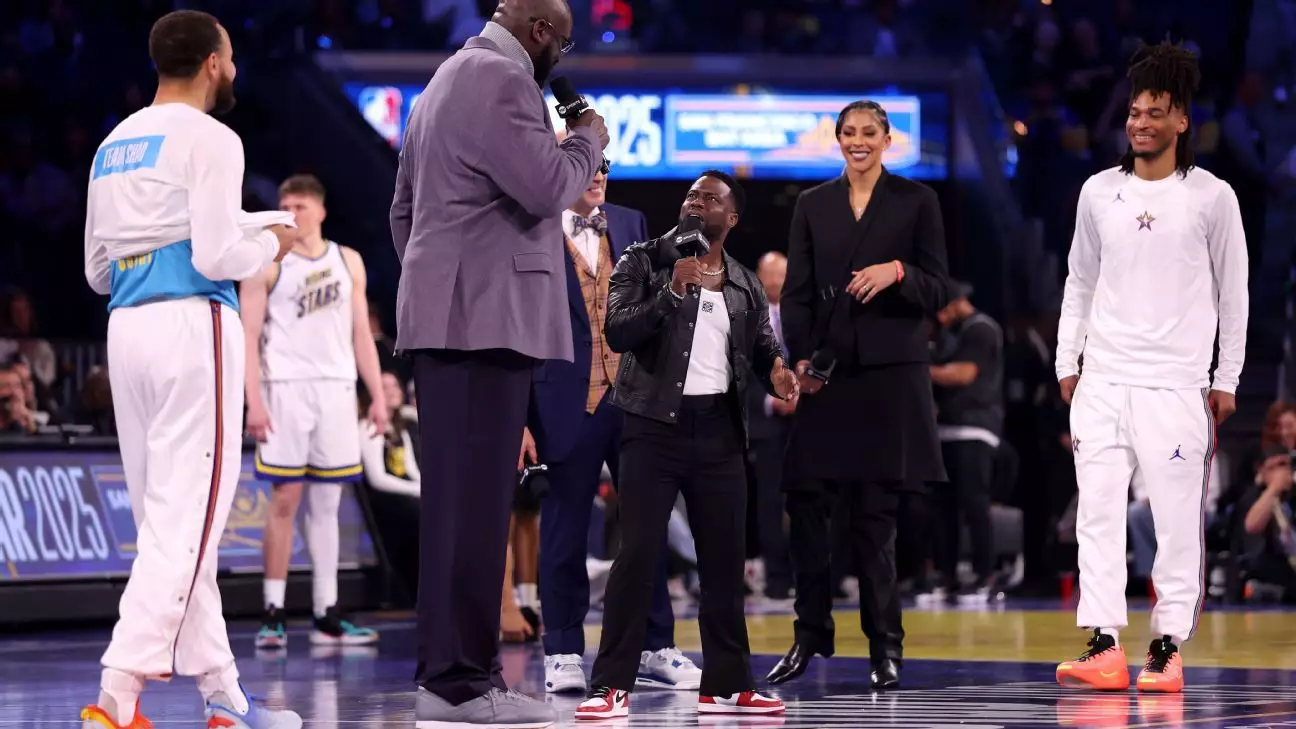The NBA All-Star Game has long been a celebrated event, showcasing the league’s elite talent in a high-energy environment. However, the latest shift in format has opened the door for debate among players, analysts, and fans alike. The introduction of a four-team, single-elimination tournament has positioned itself as a bold move aimed at revamping the traditional East vs. West format. While the concept has enticing elements, the execution has drawn criticism, particularly concerning the numerous stoppages in play. This article will explore the mixed reactions to the new format, examine player sentiments, and analyze the implications for the future of the event.
The NBA made a deliberate choice to deviate from its traditional structure for the All-Star Game, opting instead for a single-elimination tournament. This format involved four teams: Chuck’s Global Stars, Kenny’s Young Stars, Shaq’s OGs, and Candace Parker’s Rising Stars, with each game targeting a score of 40 points. While this new structure created excitement during matches, it simultaneously raised several concerns regarding pacing and the overall flow of the game.
While the innovation seemingly aimed to infuse freshness into the All-Star weekend, several players have voiced their frustration with the frequent breaks that interrupted the action. Players noted that these pauses were not merely brief, but extended too long, hindering the competitive intensity and rhythm that are essential in any basketball matchup. Atlanta Hawks star Trae Young articulated this sentiment, expressing discontent with the breaks, asserting that they diluted the experience of competing at a high level.
One of the noteworthy aspects of the recent All-Star Game was the inclusion of entertainment segments featuring comedian Kevin Hart, who provided commentary and comic relief during halts in play. While this addition might appeal to a demographic looking for entertainment, it alienates players who thrive on competition. Jaylen Brown noted that, while players enjoyed themselves, the interruptions were counterproductive to establishing a physical and competitive atmosphere.
Moreover, the championship game’s extended pause—nearly 20 minutes due to a tribute for TNT’s broadcast team—symbolizes the tension between maintaining a celebratory atmosphere and adhering to a competitive format. This juxtaposition raises questions about the underlying purpose of the All-Star Game. Is it an exhibition to showcase talent or an opportunity for players to engage in genuine competition? Striking the right balance remains a challenge for league officials in their quest to reimagine a beloved tradition.
The competitive integrity of the All-Star Game also became a focal point of discussion following the tournament. Golden State Warriors star Stephen Curry, who earned MVP honors, acknowledged the necessity for change while also emphasizing the significance of competitive spirit. The evolving format has prompted players to reconsider the objectives of the event, balancing the allure of entertainment with the desire for authentic competition.
However, not all players are pleased with the inclusion of first- and second-year players from the Rising Stars game. Draymond Green’s critique reflects a broader sentiment among veterans who feel that their contributions and struggles during early career phases are undermined by an influx of younger talent on the All-Star stage. Green’s comments underscore a sentiment of preserving the sanctity of the All-Star Game as a showcase primarily for proven elite performers, rather than diluting that prestige with newer players.
The absence of star players due to injuries, such as LeBron James, Giannis Antetokounmpo, and Anthony Edwards, further complicated the narrative surrounding this year’s All-Star Game. Their absence not only altered the competitive landscape but also diminished overall star power, which is often a significant draw for audiences. This lack of participation highlights a critical point of vulnerability for the event; without the league’s top talent participating, viewer engagement inevitably wanes.
The performances in the semifinal matchups saw players like Shai Gilgeous-Alexander and Damian Lillard step up, showcasing the depth of talent available in the league. Yet, the shadow of missing stars loomed large, suggesting that successful formats rely on everyone participating to create a captivating atmosphere for both players and fans.
The recent All-Star Game served as a crucible for important lessons on the intersection of competition and entertainment. While innovations can breathe new life into events, they must be balanced with the needs and views of the players who are inherently the backbone of these competitions. Going forward, the NBA must prioritize player feedback and experiment with different formats that maintain the spirit of competition without sacrificing the joy of the game.
The 2023 All-Star Game showcased a mix of innovative spirit, competitive desire, and struggles with execution. While players expressed enjoyment on the court, the interruptions and structural changes generated a need for reflection. The challenge remains for the NBA to listen to its star players and evolve the event in a manner that not only entertains but also respects the competitive nature of basketball that fans hold dear.


Leave a Reply